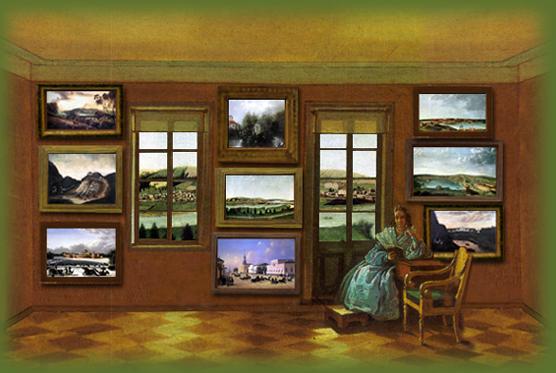In the second half of the XVIII - the first half of the XIX century Russian province follows the capital, receives the inspiration and ready-made cultural and artistic formulas from the capital art. Yet on the provincial soil there emerged quite an original artistic phenomenon lacking direct analogues in the capital. So are the Ural industrial landscapes of the first half of the XIX century. It may seem that these huge canvases (their normal size is 100x150 cm) with the views of the mines appeared either too early or too late. Too early because they appeared a century before "the birth" of the national industrial landscape painting, too late because their closest relatives are the land-maps and landscape engravings of the Peter I time. Perhaps, the industrial landscapes had some social-representative function.
Other landscapes also presented in our display had different mission. Usually they were commissioned by some private persons and were supposed to adorn the living rooms of the urban or manor houses. According to the memoirs the landscapes dominated also among the themes for the mural paintings in the private houses. "All the showing rooms were decorated with the panels and the walls and ceilings were covered with canvas and painted with glue paints. There is the hunting scene painted in the hall, landscapes in the drawing-room, the same in the mother's study, in the bed-room, as far as I remember, it was painted coppice and a drapery and a drawn curtain somewhere else. Of course it was all painted by the home-daubers, not too bad however, yet according to the contemporary criteria - even good. The utmost important for the house owner at that time was to be able to say "It's true, these paintings are not perfect but made by my own serves" ("Rasskazy babushki" - "Grandmother's Tales")
